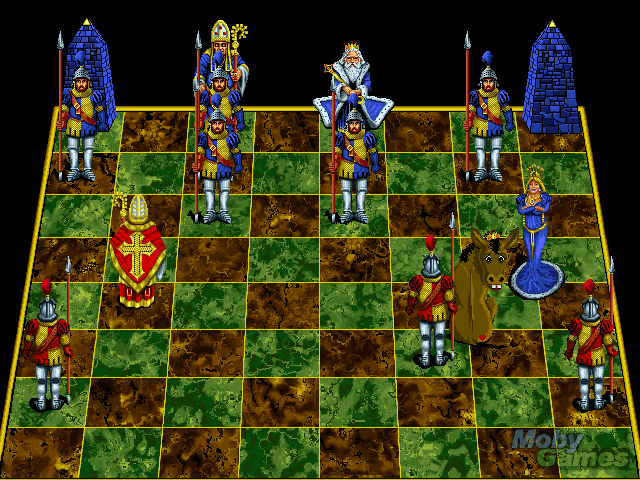DOSBox’s emulated CPU speed, displayed in its title bar, will change each time you press these keys. Type the intro special command to see a full list of DOSBox’s shortcut keys. DOSBox can also run DOS programs that aren’t games — including the Windows 3.1 operating system itself — but games are its main use case. DOSBox is a fantastic application for running MS-DOS software on modern PCs via command line, mimicking the original experience very closely in terms of speed and appearance. Thanks to DOSBox, you can emulate all kinds of CPUs and architectures, adapting them to your needs like 286 and 386 PCs in real or protected mode.
How do I configure Printfil to capture DosBox printjobs ?
DOSBOX is a DOS emulator, freely available at http://www.dosbox.com - Some Customers do use it to run their DOSprograms; mainly on 64 bit Windows systems (that cannot run 16 bitsoftware, like DOS, natively).
If instead you're using the vDos or vDosPlus DOSBox variant, please see the faq: How to print from vDos / vDosPlus.
Howto configure Printfil to capture DOS print jobs run inside DosBox dependsmainly by how the DOS program itself produces those jobs:
- The DOS program 'prints to file' itself.
- The DOS program prints to a parallel port (LPT1: , LPT2: , LPT3:) or a serial port (COM1: , COM2: , COM3: , COM4:)
1) The DOSprogram 'prints to file' itself
Inthis case you just have to point Printfil to the very same file nameproduced by the DOS program.

Youcan do it by inserting that file name in the 'File to check'field at Configuration -> Standard
There's no need to select any COM Port or LPT port to capture in that configurationdialog.

Assoon as the DOS program finishes printing, Printfil will capture thejob-file and will show it on screen, if Preview isenabled at Configuration -> Standard, orwill directly send it to the choosen Windows printer.
2) The DOSprogram prints to parallel ports (LPT1:, LPT2:, LPT3:) or serial ports (COM1:, COM2:, COM3:, COM4:)
Inthis case please note that the Standard DosBox buildavailable at the link above does NOT support parallel portemulation, so, print jobs sent by a DOS program to (say)LPT1: in DosBox simply 'disappears' and Printfil receives nothing tocapture, even if you've selected the LPT1: port at Configuration-> Standard .
There arehowever special DosBox builds (DosBox SVN Daum and DosBox MegaBuild)that DO support parallel port emulation
NEW:
You can use the free DosPrint program that checks your PC configuration, then downloads, installs and configures both the right DosBox emulator and Printfil without having to do those tasks manually. DosPrint is available for free at https://www.DosPrint.com
If instead you already have DOSBox up and running on your machine, the newer Printfil version automatically detects if DosBox SVN Daum or DosBox MegaBuild isinstalled on your Windows machine when selecting aLPT port to capture at Configuration -> Standardand asks you if you want to automatically configure DosBox to capture the selected COM port or LPT port.
So, in order to capture print jobs sent to the LPT1: , LPT2: , LPT3: , COM1: , COM2: , COM3: or COM4: portby a DOS program within DosBox you just have to:
- If it's a parallel port, install DosBox SVN Daum (http://ykhwong.x-y.net) or DosBox MegaBuild (http://home.arcor.de/h-a-l-9000)
- If you're using a previous Printfil version, upgrade your Printfil copy
- Go to Configuration-> Standard and select the LPT port or COM port you want to capture
If you prefer to redirect DOSBox prints to Printfil without using the standard configuration dialog, you can do it by the command line parameters from the Windows Command Prompt as described in the article: How to make Printfil capturing prints in DOSBox
DOSBox is an emulator for old PCs running MS-DOS, focused on running classic PC games. Though it's under constant development, new versions are only officially released from time to time, with many updates inbetween only coming out as changes to the source code on SourceForge.
Dosbox-staging
Here you can find compiled binaries of the original source, as well as an enhanced build and its source code, both created regularly soon after a new version is released on SourceForge. The enhanced build contains numerous patches with improvements that have been created by various users in the DOSBox forums on vogons.org. Because of that it's called 'Enhanced Community Edition', ECE for short. The VOGONS community also is the place to go when you're looking for news, help or if you have a problem with or a question about DOSBox.
ECE, currently available for Windows and Linux, is maintained by YesterPlay and currently differs from normal DOSBox in the following features:
Dosbox Windows 10
- Improved emulation of OPL3 (a FM sound synthesis chip from Yamaha)
- Integration of Fluidsynth (a software midi synthesizer with soundfont support)
- Support for up to 10 joystick axes and 2 D-pads (allowing 2 complete Xbox360 compatible controllers to be used)
- Support for up to 384 MB RAM, required for running Windows 9x in DOSBox ECE
- 4MB video memory, reducing sprite flickering in games with the Build engine ('Duke Nukem 3D', 'Blood', etc.)
Dosbox For Linux
FYI: I currently can't provide updated Linux builds, because my VM stopped working all of a sudden. Again. I'll update the builds asap!
